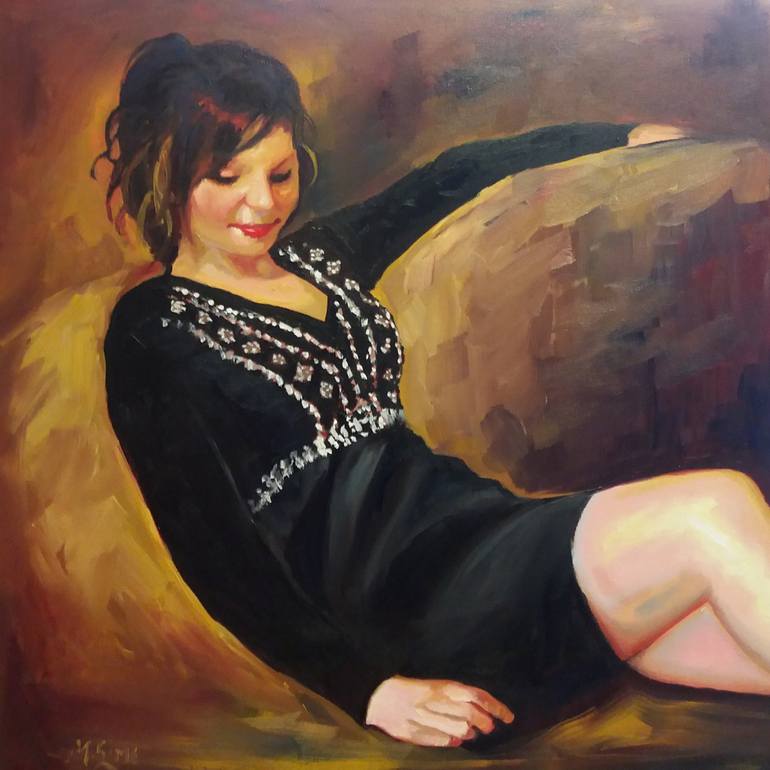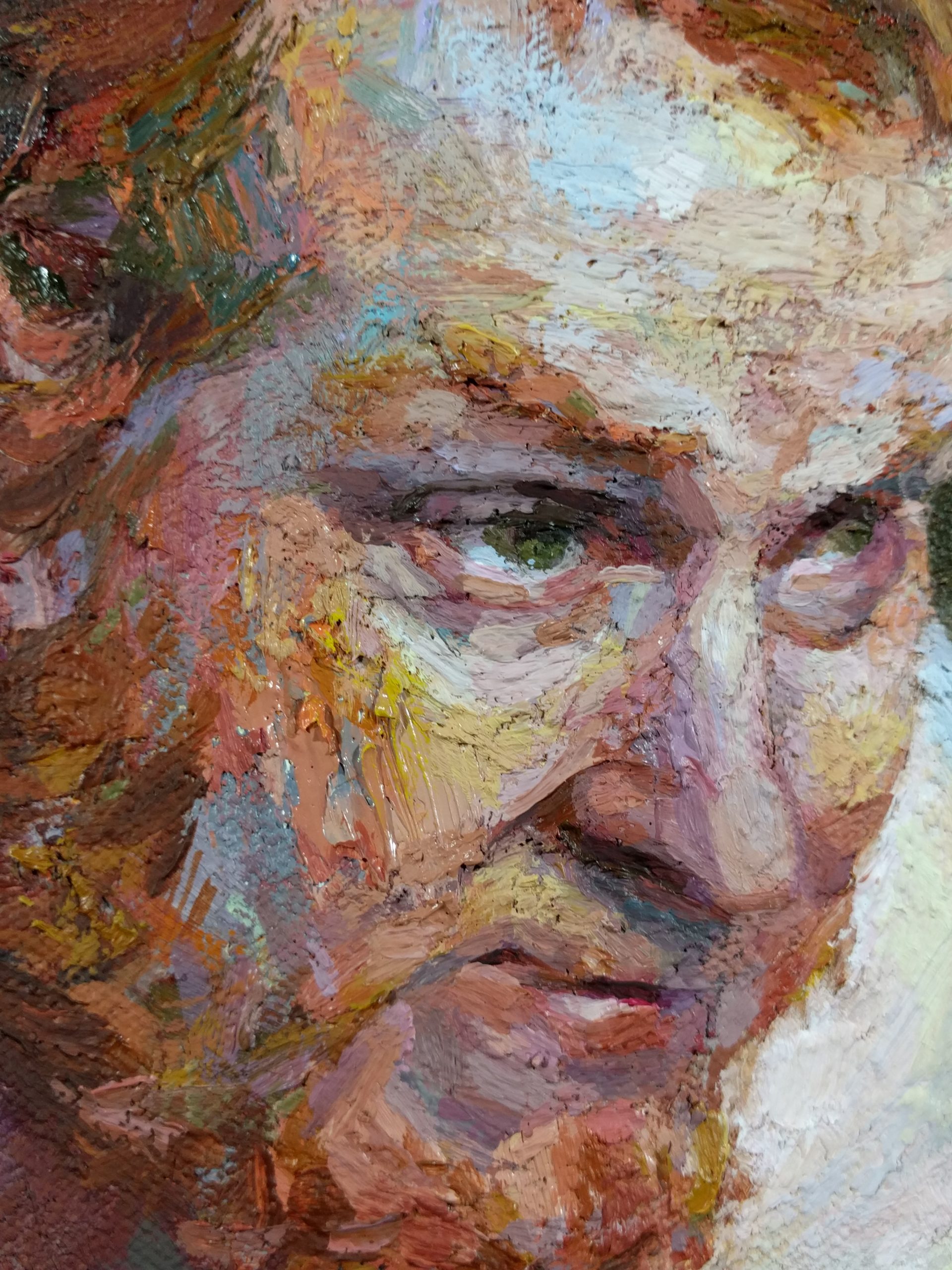How Figurative Oil Painting Changes Conventional Artistic Expression
How Figurative Oil Painting Changes Conventional Artistic Expression
Blog Article
Grasping the Art of Metaphorical Oil Painting: Essential Tips and Techniques for Aspiring Artists
Figurative oil painting represents a complex crossway of technique and interpretation, requiring a thorough understanding of human anatomy, make-up, and color concept. An expedition of shade consistency and texture techniques can considerably boost the aesthetic influence of their work.

Recognizing Human Makeup
Understanding human composition is fundamental for any kind of artist desiring grasp figurative oil paint. A detailed grasp of the human kind enables artists to create natural representations that resonate with visitors. Expertise of anatomical structures, such as muscular tissues, bones, and joints, offers vital insight into exactly how the body moves and poses.
Musicians must acquaint themselves with the proportions of the human number, consisting of the connection between different body components and exactly how these proportions differ across sexes and ages. This recognition permits precise scaling and point of view in their work. In addition, comprehending the underlying musculature improves the ability to depict motion and stress in a number, causing a more vibrant and engaging make-up.
Researching makeup likewise helps in identifying refined nuances in posture and expression, which are crucial for conveying emotion and narrative within a paint. Resources such as anatomical books, life illustration sessions, and online tutorials can be vital tools for artists seeking to grow their physiological understanding. Eventually, grasping human makeup not only boosts technological skill however likewise improves a musician's creative vision, allowing them to bring their figurative oil paintings to life with credibility and depth.
Importance of Make-up

Trick principles of composition include equilibrium, unity, and centerpieces. Attaining equilibrium ensures that no solitary component bewilders the others, while unity produces a sense of harmony throughout the item. Focal factors accentuate significant facets of the artwork, permitting visitors to engage with the story or motif more deeply.
In addition, using leading lines and the rule of thirds can considerably enhance make-up. Leading lines normally direct the audience's look with the painting, while the rule of thirds offers a structure for putting crucial elements in a visually attractive way. By understanding composition, aiming artists can boost their metaphorical oil paintings, changing them into compelling visual stories that reverberate with their audience.
Mastering Shade Theory
Shade theory serves as a basic element of figurative oil painting that matches the concepts of make-up. Recognizing the shade wheel, that includes key, secondary, and tertiary colors, is necessary for producing unified combinations and efficient visual stories.
Key ideas such as tone, saturation, and worth play an essential role in figuring out the state of mind and impact of a painting. Artists must check out warm and awesome shades to evoke certain the original source emotions; cozy shades commonly communicate energy and passion, while amazing shades can impart peace and serenity.
The relationship between complementary colors-- those contrary each other on the color wheel-- can produce striking contrasts and dynamic make-ups. When juxtaposed, these shades enhance each various other's vibrancy, attracting the customer's eye and including deepness to the artwork.
Moreover, recognizing analogous colors enables artists to achieve a sense of unity and coherence. By picking colors that are nearby on the wheel, one can maintain a balanced atmosphere throughout the piece.
Ultimately, grasping color theory gears up striving artists with the tools required to control color intentionally, improving their capability to convey feeling and story with figurative oil painting. figurative oil painting.
Methods for Structure
A range of methods can successfully produce structure in figurative oil painting, including depth and measurement to the artwork. One basic approach is using impasto, where thick layers of paint are related to the canvas, enabling a three-dimensional high quality. This technique improves light interaction, creating vibrant visual passion.
Another approach is scumbling, which includes applying a thin layer of lighter paint over a dried darker layer. This strategy allows the underlying color to reveal with, causing a soft, textured result that can evoke a sense of environment or age. Dry brushing is also crucial; using a dry brush with visit this site minimal paint, artists can create fine lines and fragile textures, ideal for capturing the subtleties of skin or fabric.
Additionally, scheme knives can be utilized to use or scrape paint, producing special patterns and appearances. Trying out different tools and products, such as sponges or cloths, can better enhance the textural top quality of a paint. Eventually, mastering these strategies needs practice and testing, permitting artists to find the varied tactile top qualities that can boost their metaphorical jobs.
Developing Your Special Design
An artist's unique style is frequently the conclusion of personal experiences, influences, and methods developed with time. Creating this individuality in figurative oil paint requires an aware initiative to explore both your psyche and the wider creative landscape. Begin by reviewing the styles and subjects that reverberate with you mentally; your passion will certainly instill authenticity into your job.
Research study different styles and motions, but instead of copying, extract components that speak with you - figurative oil painting. Trying out different techniques, shade combinations, he said and make-ups, permitting yourself the freedom to play without the pressure of excellence. Keep a sketchbook or journal to record your thoughts, ideas, and artistic development; this will act as a beneficial resource for determining repeating motifs and preferences
Look for useful responses from advisors or peers, as they can supply understandings that brighten facets of your work you may neglect. Be person with yourself; the trip of creating a distinct design is recurring, developing with every canvas and each brushstroke you experience.

Verdict
Grasping metaphorical oil painting requires a detailed grasp of human composition, composition, and color concept. Accepting these foundational principles will significantly profit striving musicians on their innovative trip.
Figurative oil painting represents a complicated crossway of technique and analysis, requiring a thorough comprehension of human anatomy, composition, and shade concept. An exploration of color consistency and structure strategies can dramatically improve the visual impact of their job. By grasping make-up, striving musicians can boost their figurative oil paints, transforming them right into engaging aesthetic stories that reverberate with their target market.
Experiment with various techniques, shade schemes, and compositions, enabling yourself the freedom to play without the stress of excellence.Grasping figurative oil paint requires a detailed understanding of human composition, composition, and color theory.
Report this page